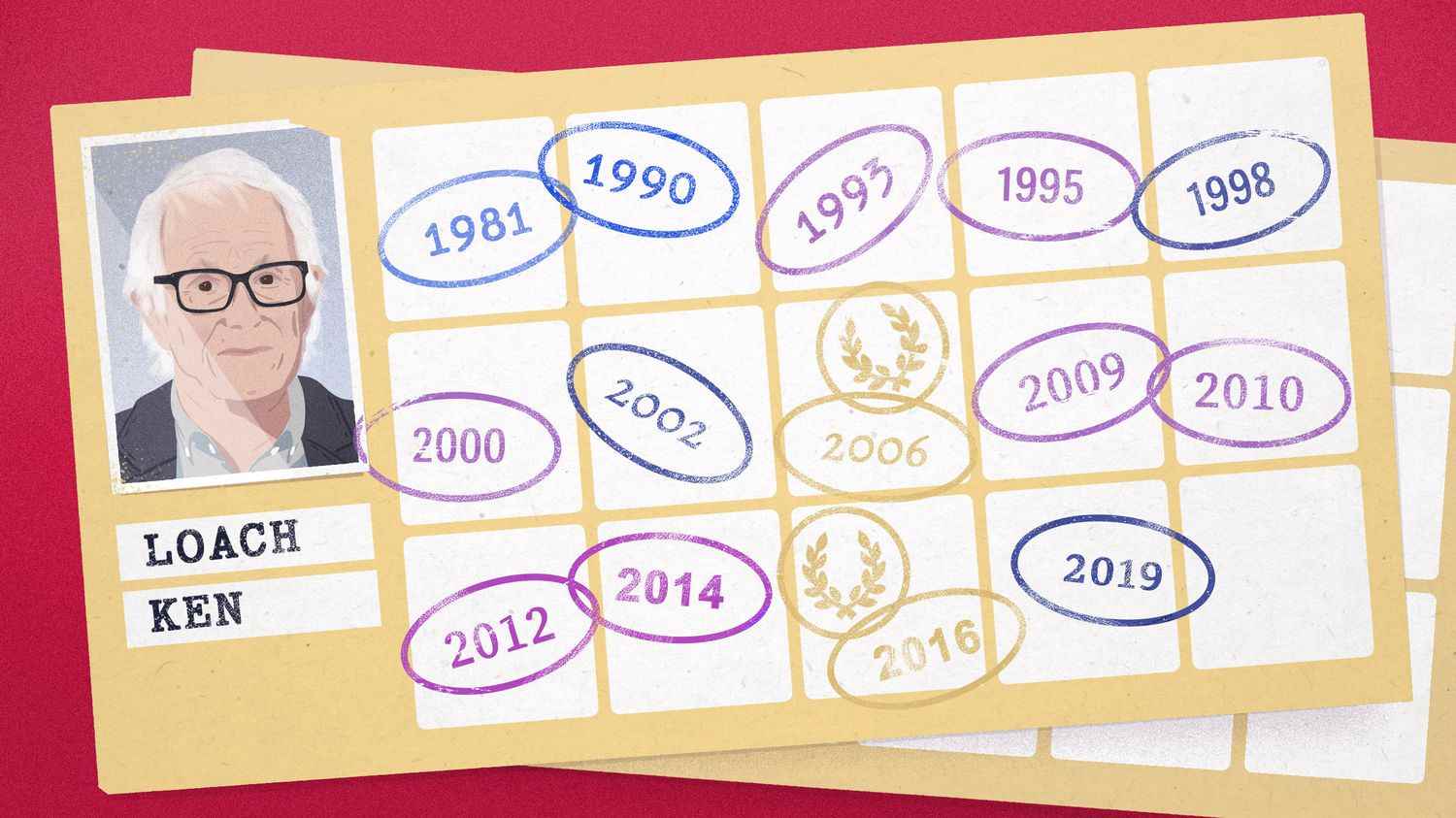The same criticisms come up time after time and you have certainly heard them before. At the Cannes Film Festival, it is always the same directors who are selected and always the same filmmakers who win the Palme d’Or. The directors selected, awarded or appointed members of the jury, they are not legion.
On the occasion of the 75th edition, which takes place from May 17 to 28 at the Palais des Festivals, franceinfo wanted to check whether these accusations, which can be heard in the mouths of the critics of the great French cinema raout, were founded. . An in-depth analysis of more than seven decades of selections and awards provides the answer, using four charts.
Several directors have their Cannes subscriber card
This is one of the criticisms that annoys the bosses of the Cannes Film Festival the most, from Gilles Jacob to Thierry Frémaux. The institution has certainly experienced commendable attempts at renewal, as in 2004, the first year when the second named officiated alone in the selection and sent to the foot of the steps of the Palais des Festivals 13 newcomers out of the 19 filmmakers selected. But the tenacious impression that some twenty big names in cinema remain clinging to their Cannes napkin ring remains.
As proof, the average participation in the festival of the almost 1,080 directors selected since 1946 is 1.7, a sign that a filmmaker who sees one of his films selected has a good chance of returning to the Croisette at least a second time. The trend has even increased. The average number of participations has climbed to 2.7 since 2010. Over the past ten years, the filmmakers selected have therefore already walked the red carpet almost three times on average. “The question about the presence of regulars, we have the impression that it is the only one that journalists allow themselves”squealed Thierry Frémaux in the documentary Selector, at the heart of the Cannes Film Festivalin 2017. Right, anyway.
It is true, however, that from the top of his fourteen selections, Ken Loach increases the average. Just like Jim Jarmusch, the Dardenne brothers or the Coen brothers, with eight or nine selections spread over three decades. This omnipresence is logically found on the prize list: Ken Loach won six prizes (including two Palmes d’Or and three Jury Prizes), the Coen brothers five (a Palme, a Grand Prix and three Directing Prizes) and the Dardenne four (two Palmes, a Grand Prize and the Screenplay Prize). Logically, the more you participate, the more chances you have of winning.
Parity within the jury has progressed since the 2000s
It was not until the advent of the Frémaux era and the early 2000s that women were guaranteed four of the nine places on the jury, at a minimum. On the other hand, for the presidency of the jury, we’ll come back. Since its creation, the festival has only been chaired eleven times by women, against 56 times by men. And of these eleven presidents, four have been since 1997.
Comment by Gilles Jacob in his Cannes Film Festival love dictionary : “Strangely, it is at the presidency of the jury that parity is contradicted in large widths.” It is the least we can say…
The presence of female directors in the Official Selection is still ultra-minority
The number of female directors who left Cannes with a Palme d’Or can be counted on the fingers of one hand: barely two in more than seven decades: Jane Campion in 1993 for The Piano Lesson (and again, ex-aequo, a half-palm will say the gossips) and Julia Ducourneau crowned last year with Titanium.
To the jury’s defence, the absence of women is noted from the Official Selection. Since 1946, films directed by women have represented only 4% of the feature films selected in competition. In 2012, there was still a selection of 22 films, all made by men. No wonder women are so underrepresented in the charts.
French and American productions overrepresented in the selection
The Cannes Film Festival was born at the end of the Second World War from an alliance between American studios and the French film industry, the most powerful in the world. A marriage that continues in the importance given to works from these two countries in the selection. This, continuously since the first edition, in 1946.
Between 1972 (year from which the festival freely selected its films, freeing itself from state supervision) and 2022, the share of films made in France Where made in USA in the selection rises on average to 38%, if we take as a criterion the country of origin of the financing, even partial, of the feature films. This hegemony is reflected in the awards: almost one in two films (47%) was financed by a production house or a studio from one of the two countries. Will the festival’s 2022 vintage prove these statistics wrong? Suspense.
